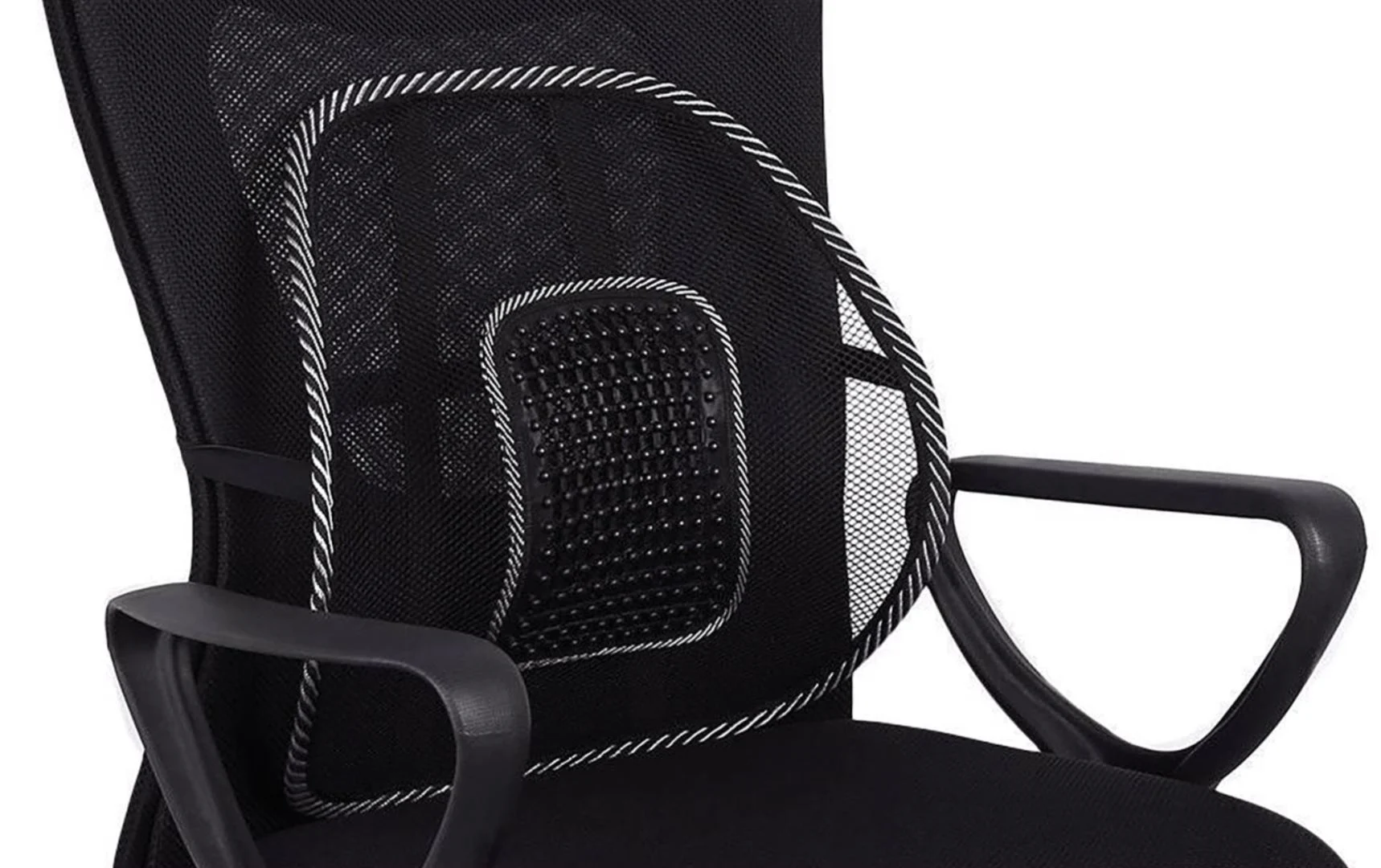Understanding lumbar support cushions:
Even in a well-designed chair, your lumbar spine (the lower back) is vulnerable to strain during long periods of sitting. That’s because the natural inward curve of your lower back, called lumbar lordosis, often flattens when you sit, especially if the backrest doesn’t fully support it. Over time, this can lead to sustained load on intervertebral discs, passive stretching of spinal ligaments, and fatigue in the deep postural muscles like the multifidus and erector spinae.
Lumbar support cushions are designed to reduce that strain by filling the gap between your lower back and the chair. By restoring and supporting the spine’s natural curve, they help redistribute load more evenly across the spine, reduce slouching, and encourage engagement of your core stabilisers.
Not all lumbar cushions are created equal, though. The right fit depends on your body shape, chair type, and how long you sit. This guide will walk you through how to choose and use one effectively, to support both your posture and spinal health.
How to choose the right lumbar support cushion
- Material: Memory foam is a standout choice because it moulds to your body, providing a customised balance of firmness and comfort.
- Size and shape: Look for a cushion that fits your lower back curve and suits your body size. Contoured designs often provide better support by aligning with the lumbar spine.
- Adjustable straps: Cushions with adjustable straps ensure the support stays secure, even if you shift positions throughout the day.
- Cover material: A breathable cover, such as mesh or cotton, helps keep your back cool and prevents discomfort during extended use.
- Firmness: The cushion should be firm enough to support your spine but still comfortable for all-day use. Avoid overly soft cushions, as they may lose shape and effectiveness over time.
Using your lumbar support cushion effectively
- Position It correctly: Place the cushion just above your belt line. It should follow the natural inward curve of your spine.
- Adjust your chair: Ensure your chair height allows your feet to rest flat on the ground, with your knees at a 90-degree angle. The lumbar cushion should complement this posture, not force an unnatural angle.
- Keep moving: No cushion can replace the benefits of regular movement. Stand, stretch, or walk around every 30–60 minutes to reset your posture and improve circulation.
- Customise comfort: Adjust the cushion’s position throughout the day as needed. Everyone’s back is different, so experiment to find what works best for you.
DIY lumbar support with clothes
If you’re in a pinch or looking for a cost-effective option, you can create lumbar support using items like a rolled-up sweater, towel, or scarf. Simply roll the item to the desired thickness and place it in the curve of your lower back. This improvised solution is easy to adjust and can be a lifesaver when you need immediate back support, especially in unfamiliar workspaces. While not as durable as a dedicated cushion, it’s a flexible, on-the-go alternative.



